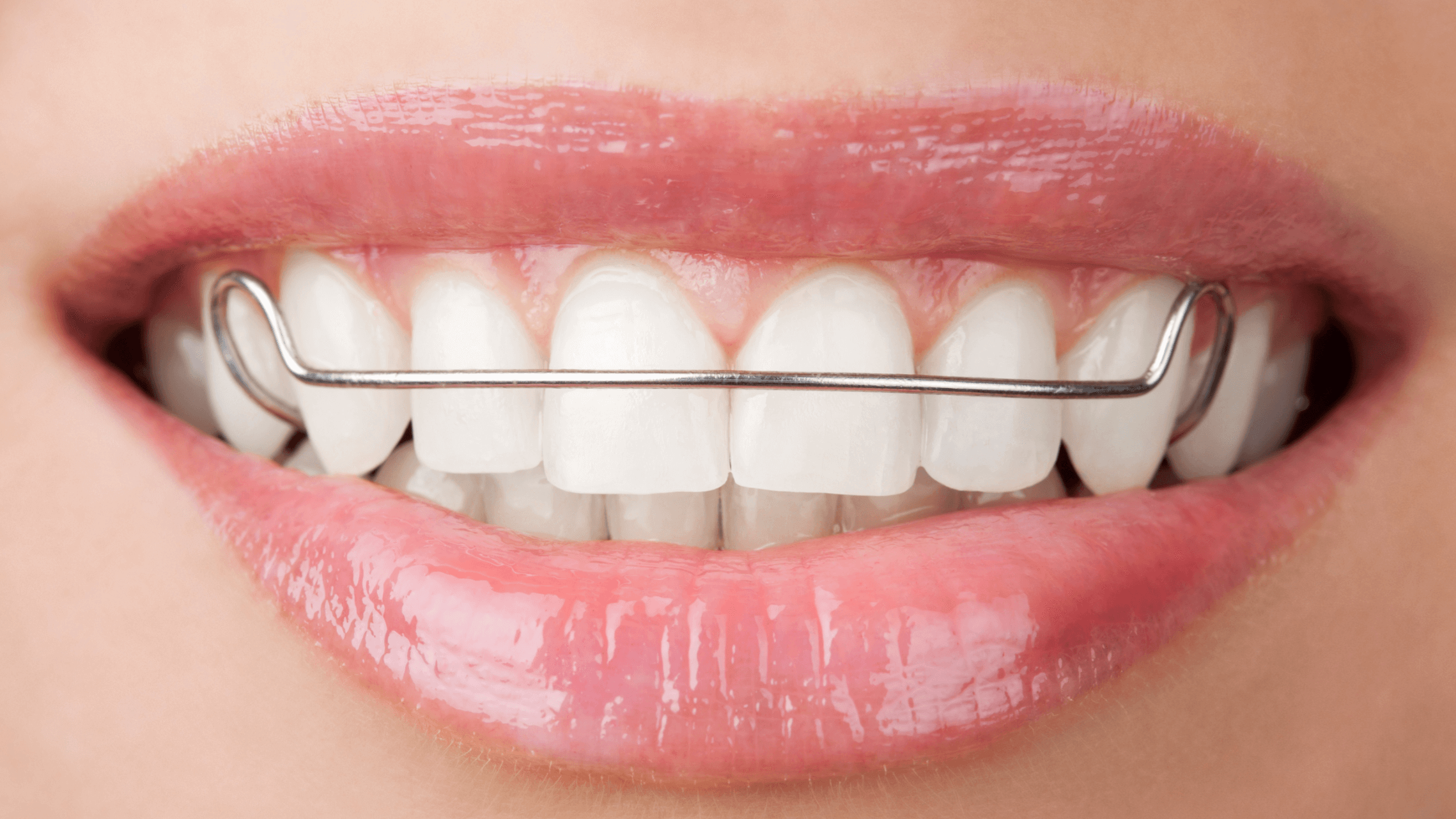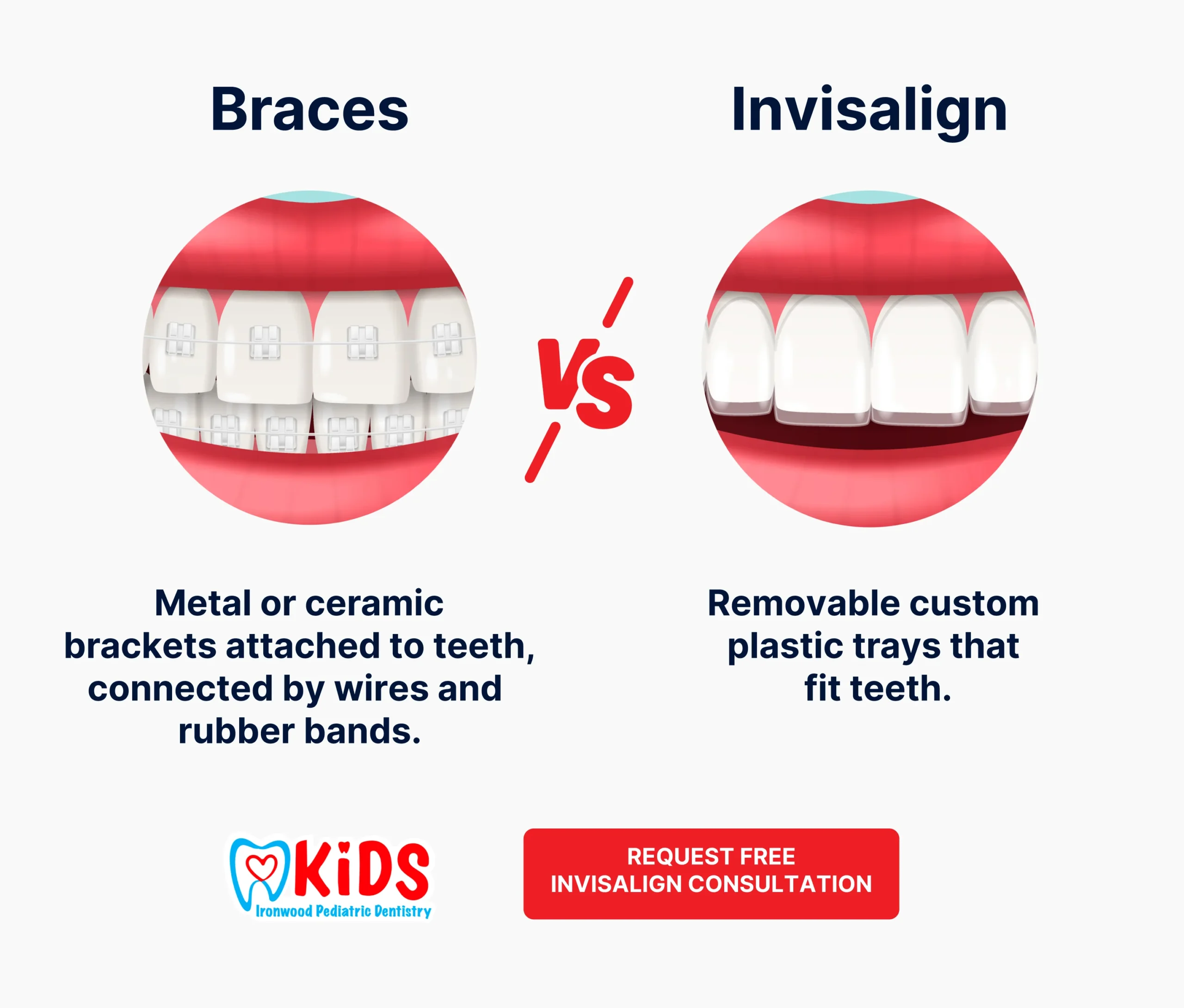How Invisalign Functions: Your Guide to Clear Aligners and Their Effectiveness
How Invisalign Functions: Your Guide to Clear Aligners and Their Effectiveness
Blog Article
Invisalign vs. Typical Braces: Which Alternative Is Right for You?
When thinking about orthodontic therapy, the selection in between Invisalign and standard braces provides numerous important factors that merit mindful examination. Invisalign provides a very discreet option with removable aligners, while typical dental braces offer a more visible yet reliable service for serious imbalance. Each option incorporates distinct benefits and downsides associated to appearances, convenience, therapy duration, and expense. Understanding these nuances is essential for making an educated decision that straightens with your individual preferences and way of living. The inquiry stays: which choice will finest satisfy your orthodontic needs and expectations?
Summary of Treatment Choices
&srotate=0)
On the other hand, standard dental braces consist of metal brackets and cables that are adhered to the teeth. This approach applies constant pressure over time to accomplish placement. While reliable for complex orthodontic concerns, traditional braces require routine sees for modifications and can position obstacles in maintaining oral hygiene because of the problem of cleaning up around brackets and cables.
Both alternatives have their merits, and the option typically hinges on particular oral problems, way of life preferences, and patient conformity. Eventually, speaking with an orthodontic specialist is vital for establishing the most ideal therapy plan customized to private needs. Understanding the subtleties of each choice can dramatically influence the overall success of orthodontic therapy.
Visual Factors To Consider
A substantial element affecting the selection between Invisalign and conventional braces is the visual charm each therapy offers. Invisalign aligners are crafted from clear plastic, making them virtually unseen when put on. This very discreet look is specifically interesting adults and young adults who might really feel awkward regarding their orthodontic treatment. The capability to keep an all-natural smile throughout the positioning procedure can substantially improve the client's self-confidence in social and professional settings.
On the other hand, typical braces include metal brackets and wires, which can be a lot more noticeable. While improvements in orthodontic technology have resulted in the development of smaller sized brackets and colored elastics, typical braces still preserve an even more conspicuous account. For some individuals, the exposure of braces might hinder them from seeking necessary therapy.
Eventually, the selection in between Invisalign and traditional braces might rest on individual choices regarding aesthetic appeals. Clients who focus on discernment typically favor Invisalign, while those who are less worried regarding visibility might select conventional dental braces. Understanding the aesthetic ramifications of each alternative is essential for making a notified choice that straightens with one's way of living and preferences.
Comfort and Convenience

In regards to ease, Invisalign aligners are detachable, making it possible for individuals to appreciate their favored foods without constraint and keep optimum dental health. Cleaning and flossing are streamlined, as the aligners can be obtained during these routines, whereas conventional braces need careful maneuvering around cords and braces.
In contrast, standard dental braces necessitate normal adjustments, making them much less practical for those with active schedules. Generally, the comfort and benefit of Invisalign make it an attractive option for numerous people looking for orthodontic treatment.
Treatment Period and Efficiency
While both Invisalign and traditional dental braces work in correcting dental imbalances, the duration of treatment can vary dramatically between the 2 options. Commonly, Invisalign treatment can take anywhere from 12 to 18 months, relying on the complexity of the instance. The clear aligners function by gradually shifting teeth right into their desired settings, and normal follow-ups with an orthodontist help ensure progression remains on track.
On the other hand, typical braces typically need a imp source longer dedication, usually ranging from 18 months to 3 years. This is due to their fixed nature and making use of braces and wires, which can be more reliable for extreme misalignments and complex instances (Invisalign). The therapy effectiveness of traditional braces is well-documented, as they enable precise modifications and better control over tooth movement
Eventually, the selection between Invisalign and conventional braces might rest on both the awaited treatment period and the particular dental concerns available. Consulting with an orthodontist is essential, as they can supply tailored suggestions based on specific needs, ensuring the chosen method lines up with wanted timeframes and results.
Expense Comparison and Insurance Coverage Options
Expense plays a significant role in the decision-making process for people taking into consideration orthodontic treatment, whether going with Invisalign or typical braces. Usually, the expense of Invisalign varieties from $3,000 to $8,000, while typical dental braces generally cost in between $2,000 and $6,000. Factors influencing these costs consist of the complexity of the situation, the duration of treatment, and geographical location.
Several dental insurance policy plans provide partial have a peek at this website insurance coverage for orthodontic treatments, yet the specifics can vary widely. Generally, traditional braces might be a lot more often covered by insurance coverage strategies contrasted to Invisalign, which some insurance providers classify as a cosmetic treatment.
In addition, numerous orthodontic methods supply adaptable settlement strategies, making both therapy alternatives a lot more available. People ought to inquire regarding possible financing alternatives and discount rates for ahead of time settlements. Examining the complete price, including insurance coverage benefits and repayment strategies, is vital for making a notified choice that aligns with both aesthetic choices and spending plan considerations.

Final Thought
In recap, the selection in between Invisalign and traditional dental braces pivots on multiple elements, consisting of aesthetic preferences, convenience, treatment period, and cost. Invisalign offers a very discreet, detachable choice that assists in dental hygiene and nutritional adaptability, while conventional braces may be more appropriate for complex oral concerns and often come with a lower rate factor. Inevitably, assessment with an orthodontist is necessary to evaluate private conditions and figure out the most proper treatment option for attaining ideal oral positioning.
When taking into consideration orthodontic treatment, the selection between Invisalign and conventional dental braces presents several important aspects that warrant mindful analysis.Comparing Invisalign and conventional braces exposes distinctive therapy alternatives for orthodontic modification.While both Invisalign and traditional dental braces are reliable in dealing with oral imbalances, the period of therapy can differ dramatically in between the two alternatives.Price plays a considerable duty in the decision-making process for individuals taking into consideration orthodontic treatment, whether opting for Invisalign or conventional dental braces.In recap, the choice between Invisalign and standard braces hinges on numerous aspects, including aesthetic preferences, comfort, treatment duration, and expense.
Report this page